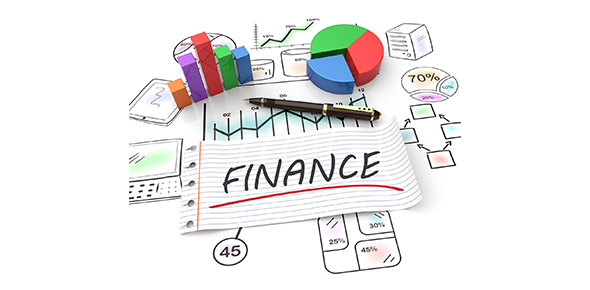Related Flashcards
Related Topics
Cards In This Set
| Front | Back |
|
The demand schedule is: a) a curve that shows the relationship between price and quanity demanded, everything else equal b) a table that shows the relationship between price and quanity supplied, everything else equal c) a list of time periods durning which the quanity of a good is demanded d) the order in which indiviual consumers arrive to demand a good or service
|
B) a table that shows the relationship between price and quanity supplied, everything else equal
|
|
If the price of a pound of Kenyan coffee decreases from $12 a pound to $10, we can expect an: a) inward shift in the supply in the supply curve of Kenyan coffee b) increase in the quanity supplied of Kenyan coffee c) inward shift in the demand curve for Kenyan coffee d) increase in the quanity demanded of Kenyan coffee
|
d) increase in the quanity demanded of Kenyan coffee
|
|
The demand for a good increases when the price of a substiute_____and also increases when the price of complement_____.
a)falls; rises b)rises; falls c)rises; rises d)falls; falls |
D) rises; falls
|
|
If air travel to Hawaii becomes less expensive, what is likely to happen in the market for hotel rooms in Hawaii?
a) The demand curve for hotel room will shift inward b) The demand curve for hotel rooms will shift outward c) The supply curve for hotel rooms inward d) The supply curve for hotel rooms will shift outward |
B) The demand curve for hotel rooms will shift outward
|
|
How would an increase in the price of cotton affect the market for cotton T-shirts at DSU bookstore?
a) The demand curve for cotton T-shirts will shift inward b) The demand curve for cotton T-shirts will shift outward c) The supply curve for cotton T-shirts will shift inward d) The supply curve for cotton T-shirts will shift outward |
C) The supply curve for cotton T-shirts will shift inward
|
|
How could the goverment cause an increase in the equilibrium price of milk?
a) Take milk from government storage and sell it b) Encourage farmers to produce more milk c) Subsidize the purchase of more dairy equipment d) Provide subsidies to farmers to produce less milk |
D) Provide subsidies to farmers to produce less milk
|
|
Beef and leather belts are complements in production. If people's concern about health shifts the demand curve for beef leftward, the result in the market for leather belts will be a:
a) higher equilibrium price for a leather belt because there is a decrease in the supply of leather belts b) lower equilibrium price for a leather belt because there is a decrease in the supply of leather c) lower equilibrium price for a leather belt because there is an increase in the supply of leather belts d) higher equilibrium price for a leather belt because there is an increase in the supply of leather belts |
C) lower equilibrium price for a leather belt because there is an increase in the supply of leather belts
|
|
Which of the following could account for the fact that ice cream prices have recently increased and that consumption of ice cream has declined?
a) the supply of ice cream has decreased b) the supply of ice cream has increased c)the demand for ice cream has increased d) the demand for ice cream has decreased |
A) the supply of ice cream has decreased
|
|
If it was medically proven that eating fish helped prevent cancer, and at the same time fish farmers increase production. The effect on the market for fish would be:
a) a rightward shift in both the demand and supply curve b) a rightward shift in the demand curve with no change to the supply curve c) a rightward shift in the demand curve with no change to the supply curve d) a downward movement along the demand curve with no change to the supply curve |
A) a rightward shift in both the demand and supply curve
|
|
Price elasticity of supply is defined as:
a) the change in quanity supplied divided by the change in price b) the change in supply divided by the change in price c) the change in supply divided by the change in demand d) the percentage change in the price divided by the percentage change in the quanity supplied e) the percentage change in the quanity supplied divided by the percentage change in the price |
E) the percentage change in the quanity supplied divided by the percentage change in the price
|
|
Which of the following is not considered a determinant of supply?
a) technology b) taxes and subsidies c) number of buyers d) resource prices |
C) number of buyers
|
|
Assume that at the same time that a geological study results in the discovery of huge deposits of Bakken oil in the United States, there is a shift consumer preferences toward mass transit, as oppossed to personal cars. Based on this, we can conclude with certainity that in the market for gasoline equilibrium:
a) price will decrease b) quanity will decrease c) price will increase d) quanity will increase |
A) price will decrease
|
|
Which of the following statements is correct?
a) a change in demand or supply can only be change in price b) a simultaneous decrease in demand and increase in supply will result in an increase in equillibrum price and uncertain effect on quanity c) if price currently above equilibrium market adjustments will result in a decrease in the price and quanity supplied d) an increase in supply invariably leads to a shortage in the affected market |
C) if price is currently above equilibrium market adjustment will result in a decrease in price and quanity supplied
|
|
Over the summer it is learned that all that cholestrol in eggs in even worse health wise than was once thought. Additionally in response to high corn prices resulting from ethonal expansion the quality of chicken feed has suffered reducing average egg production per chicken and therefore the supply of eggs. The impact of these two events on egg prices and quanity demanded.
a) egg prices increases, quanity of eggs demanded increases b) egg prices is ambiguous, quanity of eggs demanded increases c) egg prices is ambiguous, quanity of eggs demanded decreases d) egg prices decreases, quanity of eggs demanded increases |
C) egg prices is ambiguous, quanity of eggs demanded decreases
|
|
The own price elasticty of demand for ice is -0.349%. The interpretation of this elasticity is:
a) a 1% increase in price of ice cream results in a 0,349% increase in the quanity of ice cream b) a $1 increase in price of ice cream results in a 0.349% decrease in the quanity of ice cream c) a 1% decrease in price of ice cream results in a 0.349% increase in the quanity of ice cream d) a 1% increase in price of ice cream results in a 34.9% decrease in the quanity of ice cream demanded b) |
C) a 1% decrease in price of ice cream results in a 0.349% in the quanity of ice cream
|








